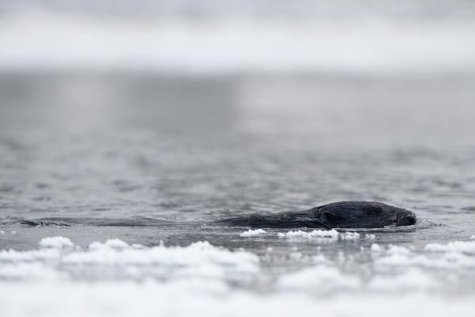Life around the mud squirrel's lodge
Photo: Arne Ader
Translation: Liis
Beaver
| Beaver |
Kobras e piiber
|
Castor fiber |
An ancient native of Estonian nature and our biggest rodent; exterminated in the 18th century. Causes: its fur "worth gold“, castoreum - the secretion from the castor sacs - and the tasty and nourishing meat of this vegetarian. The reestablishers and the reestablishment came from beyond Lake Peipus and ocurred spontaneously before the 1960ies. Today the beaver population is believed to be around 18 000 individuals, somewhat too numerous according to experts.
All entrances to beaver nests, lodges as well as other dens established on embankments have their openings under water. It is a kind of „heat trap“ that keeps cold external air from cooling the lodge; water temperature is always above zero.
Branches and twigs are stored for winter food; they are taken to the lodge or pushed into the bottom mud of the water body. But as experience shows, additional food has to be found: the roots of white and yellow water lilies and of club-rushes, and the roots and rhizomes of bulrushes (Typha angustifolia). The bark of conifers is gnawed when the menu becomes too boring. On trees that are bent down by the heavy snow finer branches can be reached without felling the frozen trunks.
We won’t discuss the nuisances that beavers create; many of their doings influence the surrounding environment. Biological life around the lodges is rich and varied; a beaver dam works as water treatment station and adds oxygen to the water. Frogs gather there for wintering and fish life is richer. This in turn attracts otters and minks. Lynx and wolf tracks show that careless lodge inhabitants are observed with interest.
The winter track book tells about many things!









